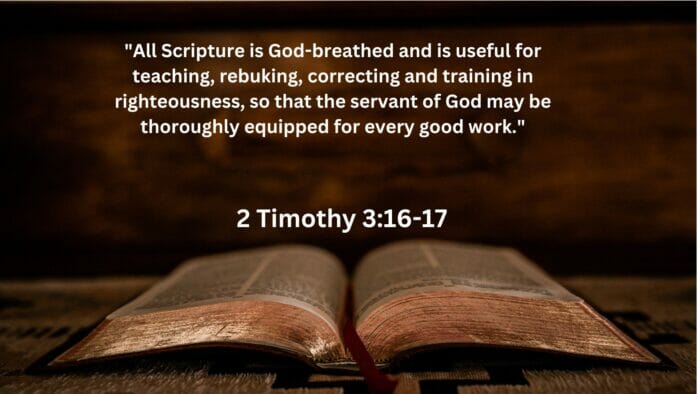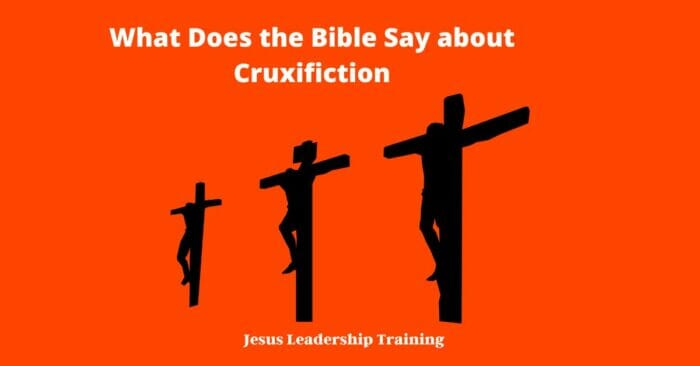What Does the Bible Say about Crucifixion – The Bible is full of references to the crucifixion of Jesus Christ, from His own prophecies to the accounts of the event itself. According to Matthew 27:35, Jesus was crucified with two criminals at either side of Him.
In addition, the crucifixion of Jesus is mentioned in various other books of the Bible, such as John 19:18-19, Mark 15:24-25, Luke 23:33-34, and Acts 2:22-24. The Bible also includes other references to the crucifixion, including the importance of Jesus’ death and resurrection as a symbol of perfect love and sacrifice. Jesus’ death on the cross is seen as the ultimate proof of His love for mankind, and the ultimate example of His willingness to sacrifice Himself for the salvation of all humankind.
Table of Contents
What Does the Bible Say about Crucifixion
The crucifixion of Jesus Christ is one of the most pivotal moments in human history, and it is a topic that is addressed in the Bible. It is a subject that remains deeply relevant to Christians today, and it is important to understand what the Bible says about the crucifixion. In this blog post, we will explore the Godly meaning of crucifixion, the different types of crosses used in ancient times, the Roman practice of crucifixion, the death of Jesus on the cross, and a variety of other topics related to crucifixion as described in the Bible.

We will also look at the cross as a symbol of crucifixion, the James Bible on crucifixion, and the role of the crucified in the New Testament. Finally, we will discuss the pain and suffering of crucifixion, the significance of the cross to Christians, the consequences of crucifixion in the Bible, and the biblical perspective on the crucifixion.

Crucifixion is one of the oldest and most well-known forms of execution, and it has been used in many cultures throughout the world. It is also referenced several times in the Bible, both of Old and New Testaments. In this blog, we’ll explore what the Bible says about crucifixion and the significance of Jesus’ death on the cross.

First, let’s look at what the Bible says about Jesus’ crucifixion. In the Gospel of Matthew, we learn that Jesus was taken to a place called Golgotha, which means “the place of the skull”. This is where Jesus was nailed to the cross and died for the sins of mankind. According to the Bible, Christ’s death on the cross was a sacrificial act of love and mercy, so that we may have eternal life.
In the New Testament, Romans 6:6 says “We know that our old self was crucified with him so that the body of sin might be done away with, that we should no longer be slaves to sin”. This verse speaks of the importance of dying to our old self and accepting Christ in our lives. It is a reminder of how Jesus’ death on the cross has the power to set us free from the bondage of sin.
In the book of James, James 1:12 says “Blessed is the one who perseveres under trial because, having stood the test, that person will receive the crown of life that the Lord has promised to those who love him”. This verse speaks of the importance of perseverance in the face of trial and tribulation. It is a reminder that if we stand firm in our faith and trust the Lord, He will give us the strength to overcome our trials.
Finally, let’s look at some of the Bible verses that specifically mention crucifixion. Matthew 27:35-50 describes the crucifixion of Jesus. It tells us that Jesus was mocked, spat upon, and given a crown of thorns. It also tells us that when Jesus died, the curtain in the temple was torn in two, signifying the end of the old covenant and the establishment of the new covenant.

the Bible has a lot to say about the crucifixion. It tells us that Jesus was taken to Golgotha, where He died for the sins of mankind. It also tells us that Christ’s death on the cross was an act of love and mercy, so that we may have eternal life. It reminds us to die to our old selves and accept Christ in our lives, and to persevere even in the face of trials and tribulation. Finally, it gives us a vivid description of the crucifixion of Jesus and the significance of that event. May we never forget the power of the cross and the love of our Lord Jesus Christ.
List of the Stations of the Vila De la Rosa in Jesus’ Crucifixion
- Garden of Gethsemane: Jesus went to this garden with his disciples to pray. Here he was betrayed by Judas and arrested by the Roman soldiers.
- Praetorium: The Roman court where Jesus was tried and sentenced to death.
- First Scourging: Jesus was brutally scourged by Roman soldiers.
- Second Scourging: Jesus was scourged again before being presented to Pontius Pilate.
- Crown of Thorns: Jesus was ridiculed and mocked when a crown of thorns was placed on His head.
- Carrying of the Cross: Jesus was forced to carry His own cross to the site of His crucifixion.
- Crucifixion: Jesus was nailed to a cross and died for the sins of the world.
- Tomb of Jesus: Jesus was buried in a tomb and rose again three days later.
The Godly Meaning of Crucifixion
The Bible speaks of crucifixion as a punishment for a variety of crimes, but it also places a godly meaning on the act. In the Old Testament, God speaks of His wrath being poured out on those who transgressed His law, and this wrath was often expressed in the form of crucifixion.

In the New Testament, the crucifixion of Jesus takes on a much different meaning. Jesus was the perfect sacrifice for the sins of humanity, and His death on the cross was a symbol of His love for us. The Bible speaks of Jesus as the Lamb of God who takes away the sins of the world, and His crucifixion was the ultimate demonstration of His love for us.
Ancient Types of Crosses Used in Crucifixion
In the ancient world, there were a variety of types of crosses used in crucifixion. The most common type was the Latin cross, which was a simple upright cross with a crossbeam at the top. This type of cross was used by the Romans in the crucifixion of Jesus. Other types of crosses were also used, such as the St. Andrew’s cross, which was an X-shaped cross, and the Tau cross, which was a T-shaped cross.
- Tau Cross (St. Anthony’s Cross): This is the most common type of cross used for crucifixion. It is shaped like a “T” and is the same type of cross used by Jesus. It is also called St. Anthony’s Cross because it is believed to be the cross on which St. Anthony of Padua was martyred.
- Latin Cross: This type of cross is also known as the Patriarchal Cross and is shaped like a “+”. It is the most widely used symbol of Christianity and is the type of cross used for traditional crucifixion.
- Greek Cross: This is a cross in the shape of a “+”, but the arms are all equal in length. It was used by the Greeks and Romans for crucifixion.
- Anchor Cross: This is a cross with the bottom arm made into an anchor. It was used by the Romans for crucifixion.
- Calvary Cross: This is a Latin Cross set atop a hill or mound. It was used by the Romans to display the bodies of those they had crucified.
- Cross of St. Andrew: This is an X-shaped cross that is named after St. Andrew, who was said to have been crucified on such a cross. It is also known as the Saltire Cross.
The Roman Practice of Crucifixion
The Romans were the most prolific practitioners of crucifixion. The Romans used crucifixion to punish criminals, political dissidents, and enemies of the state. It was a cruel and inhumane form of punishment, and the Romans considered it to be a deterrent to crime. Crucifixion was a slow and painful death, and those who were crucified were often stripped and scourged before being nailed to the cross.
The practice of crucifixion is one that has been used by many cultures throughout history, but it was the Romans who perfected it as a means of cruel and unusual punishment. Crucifixion was a form of capital punishment in the Roman Empire, and its use was so widespread that it has become synonymous with the Roman period. The practice of crucifixion was used to punish a wide variety of crimes, from treason and desertion to robbery, murder, and insurrection.
The exact details of crucifixion varied over time and place, but generally, it involved a person being stripped of their clothing and then nailed to a cross made of wood or metal. The victim’s arms were stretched out and then nailed at the wrists and/or ankles. The person was then left to die from exposure, thirst, and starvation, or in some cases, from the pain of the nails being driven into the body.
In some cases, the victim was left for days or even weeks before finally succumbing to death. This was done to create a deterrent for others who might commit similar crimes. In some cases, the victim would be offered a drink of vinegar or other substances to ease the pain, but this was not always the case.
The practice of crucifixion is an important part of religious history, as it was used by the Romans to execute Jesus Christ. It is believed that Jesus was crucified on a hill called Golgotha, which is now referred to as Calvary. The crucifixion of Jesus is seen by many Christians as the ultimate sacrifice, and it is a significant part of the history of Christianity.
The practice of crucifixion is one that has had a lasting impact on history and religion. While it is no longer practiced today, it serves as a reminder of how far we have come in terms of our approach to justice and punishment. Although it is still seen as a cruel and unusual punishment, it is a part of history that will never be forgotten.
The Death of Jesus on the Cross
The death of Jesus on the cross is described in all four Gospels of the New Testament. In Matthew 27:32-50, we read the account of Jesus being crucified. We learn that Jesus was mocked and ridiculed, and that after He was stripped and scourged, He was nailed to the cross. We also learn that Jesus was crucified between two criminals, and that He suffered greatly before His death.
Biblical Verses on Crucifixion
There are a number of verses in the Bible that speak about crucifixion. In Isaiah 53:5-7, we read: “But he was pierced for our transgressions, he was crushed for our iniquities; the punishment that brought us peace was upon him, and by his wounds we are healed. We all, like sheep, have gone astray, each of us has turned to our own way; and the LORD has laid on him the iniquity of us all. He was oppressed and afflicted, yet he did not open his mouth; he was led like a lamb to the slaughter, and as a sheep before its shearers is silent, so he did not open his mouth.”
In Galatians 3:13, we read: “Christ redeemed us from the curse of the law by becoming a curse for us, for it is written: ‘Cursed is everyone who is hung on a pole.’”
What Does the Bible Say about Crucifixion?
The cross is a very powerful symbol in Christianity. It represents the ultimate sacrifice of Jesus Christ, who was crucified for the sins of mankind. Crucifixion was a cruel and torturous punishment that was used by the Romans and other ancient civilizations to punish criminals and enemies of the state. But the Bible has a much deeper and more significant meaning for the crucifixion of Christ.
The James Bible on Crucifixion
The Bible speaks extensively about the crucifixion of Christ. In the book of James it states that “God demonstrates his own love for us in this: while we were still sinners, Christ died for us.” This verse is a reminder of the ultimate sacrifice of Jesus Christ and God’s love for us. It also serves to remind us that no matter how bad we may have done, God is always willing to forgive us and offer us a second chance.
God’s Plan for the Crucifixion of Christ
The Bible also speaks about the crucifixion of Christ from God’s perspective. In Matthew 16:21 we read that Jesus told his disciples “From that time on Jesus began to explain to his disciples that he must go to Jerusalem and suffer many things at the hands of the elders, chief priests and teachers of the law, and that he must be killed and on the third day be raised to life.” This verse shows that God had a plan for the crucifixion of Jesus and that he knew this would be the outcome.
The Role of the Crucified in the New Testament
The Bible also speaks about the role of the crucified in the New Testament. In Romans 6:3-4 we read that “We were therefore buried with him through baptism into death in order that, just as Christ was raised from the dead through the glory of the Father, we too may live a new life.” This verse shows how the death and resurrection of Jesus has an impact on our lives. We are called to follow in his footsteps and live a life of faith and surrender to God.
List of People that had been Crucified as a form of Death
- Jesus Christ – Jesus Christ, the central figure in Christianity, is believed to have been crucified on the orders of Pontius Pilate, the Roman prefect of Judaea province, in around 30 AD. Jesus’ death by crucifixion is seen by Christians as an atonement for the sins of humanity.
- Simon of Cyrene – Simon of Cyrene was a Jew from Cyrene, in modern-day Libya, who was forced to carry the cross of Jesus Christ on the way to his crucifixion, as recorded in all three of the Synoptic Gospels.
- Spartacus – Spartacus was a Thracian gladiator who led a major slave uprising against the Roman Republic in 73–71 BC. He was crucified along with 6,000 other slaves in the Third Servile War (73–71 BC).
- Saint Peter – According to tradition, Saint Peter, one of the 12 Apostles and the first Pope, was crucified upside down at his own request at the Circus of Nero in Rome in the year 64 AD.
- Saint Andrew – Saint Andrew, the patron saint of Scotland, was crucified in the city of Patras in Achaea, Greece in the year 60 AD. According to tradition, he was crucified on an X-shaped cross, which has since become known as the Saint Andrew’s Cross.
- Saint Lawrence – Saint Lawrence, a deacon of the early Christian church in Rome, was martyred in the year 258 AD by being roasted alive on a gridiron. However, there is also evidence that he was first crucified.
- Saint Dismas – Saint Dismas, known as the ‘Good Thief’, was crucified alongside Jesus Christ on the orders of Pontius Pilate in 33 AD. According to tradition, he was the first to recognize Jesus as the Messiah and ask for his forgiveness.
- Friedrich Schiller – Friedrich Schiller, a German poet, philosopher, historian and playwright, was sentenced to death by crucifixion in 1782, but his sentence was later commuted to exile.
- Jean Calas – Jean Calas, a French Huguenot, was convicted of murdering his son in 1762 and was sentenced to death by public crucifixion. He was eventually exonerated in 1765.
- Yusuf al-Mu’taman ibn Hud – Yusuf al-Mu’taman ibn Hud, the ruler of Granada in the 11th century, was crucified by the invading forces of the Almoravids in 1090 AD.
The Pain and Suffering of Crucifixion
The Bible also speaks about the pain and suffering that Jesus endured on the cross. In Isaiah 53:3 we read “He was despised and rejected by mankind, a man of suffering, and familiar with pain. Like one from whom people hide their faces he was despised, and we held him in low esteem.” This verse speaks to the immense suffering that Jesus experienced while he was on the cross.
The crucifixion of Jesus Christ is a widely known event that is often thought of as the ultimate symbol of pain and suffering. However, few people truly understand the immense and excruciating pain that was inflicted upon Jesus in the hours and days leading up to his death.
Crucifixion was a particularly cruel form of execution that was used by the Romans in the first century. It was often used to punish criminals or enemies of the state, and could last hours or even days before death. The process began with the stripping of the victim’s clothes, followed by a flogging with a whip made of leather strips. The victim was then forced to carry a heavy wooden crossbeam to the place of execution.
Once the victim was at the place of execution, their hands and feet were nailed to the crossbeam with large iron spikes. This was an agonizing process that caused immense pain and would often lead to shock and sometimes even death. The victim would then be lifted up and the crossbeam was secured to the upright post. The position was extremely uncomfortable and any movement of the body caused greater suffering.
The pain of crucifixion was further exacerbated by the effects of dehydration, as the victim was unable to reach the ground to take a drink of water. The victim would often remain on the cross for days, with the pain becoming more intense as the days passed. In addition, the victim was often exposed to the elements, making them vulnerable to the harsh sun, wind, and cold.
The mental anguish of crucifixion was just as great as the physical pain. It was a very public form of execution, with crowds of people often gathering to watch the process and jeer at the victim. The humiliation of such a public death was devastating, and the victim would often be taunted and reviled by the onlookers.
The crucifixion of Jesus was a particularly brutal and painful event. Not only did Jesus experience the physical suffering of the crucifixion itself, but he also endured the spiritual agony of being forsaken by God. His death on the cross is an example of the ultimate sacrifice of love and is a reminder of the incredible suffering he endured for us.
The Significance of the Cross to Christians
The Bible speaks of the significance of the cross to Christians. In Colossians 2:14 we read “Having disarmed the powers and authorities, he made a public spectacle of them, triumphing over them by the cross.” This verse shows us that Jesus’ death on the cross was an act of triumph and victory. By dying on the cross, Jesus disarmed the powers of death and evil and triumphed over them.
The Consequences of Crucifixion in the Bible
The Bible speaks about the consequences of the crucifixion of Jesus. In Mark 9:31-32 we read “The Son of Man is going to be delivered into the hands of men, and they will kill him. And when he is killed, after three days he will rise.” This verse speaks to the consequences of Jesus’ death. Jesus died, but his death resulted in the resurrection and promise of eternal life for those who believe in him.
The Crucifixion of Christ in Ancient Times
The Bible also speaks about the crucifixion of Christ in ancient times. In Luke 23:33-34 we read “When they came to the place called the Skull, there they crucified him, along with the criminals—one on his right, the other on his left. Jesus said, ‘Father, forgive them, for they do not know what they are doing.’” This verse speaks to the brutality and injustice of the crucifixion of Jesus in ancient times.
Ancient History of the Capital Process of Crucifixion
Crucifixion is an ancient method of execution that was used by the Romans as punishment for crimes such as treason, murder, and robbery. It is believed to have been used by the Persians and even the Assyrians before the Romans. The origin of the practice is not known, but it was likely based on similar practices used by other ancient cultures.
The crucifixion process was brutal and inhumane. It began with the victim being stripped and beaten with rods or whips. The victim was then tied to a cross or stake, with either nails or ropes. The nails were typically driven through the wrists and feet, while the ropes were tied around the neck and arms. The victim was then left to hang until death.
The process of crucifixion was intended to be prolonged and painful. Victims were typically left to suffer for days, sometimes weeks. The victim was exposed to the elements and suffered from dehydration, hunger, and infection. If the victim was not dead after a few days, the executioners would often break the legs of the victim to hasten death.
The Romans would often use crucifixion as a form of public humiliation. They would often parade the condemned through the streets and have them publicly displayed on the cross. This public display was meant to serve as a warning to other potential criminals.
Crucifixion was a form of capital punishment used in many parts of the ancient world, including the Roman Empire, the Assyrian Empire, and the Persian Empire. It was used as a punishment for treason, murder, and robbery, and was meant to be a form of public humiliation. The process was brutal and inhumane, and victims were often left to suffer for days, sometimes weeks, before death.
The Biblical Perspective on Crucifixion
The Bible also speaks to the biblical perspective on crucifixion. In 1 Corinthians 1:17-24 we read “For Christ did not send me to baptize, but to preach the gospel—not with words of human wisdom, lest the cross of Christ be emptied of its power. For the message of the cross is foolishness to those who are perishing, but to us who are being saved it is the power of God.” This verse clearly shows the power of the cross and the importance of Jesus’ death on the cross.
Final Thoughts – What Does the bible say about Crucifixion
The Bible speaks extensively about the crucifixion. It speaks to the cross as a symbol of crucifixion, the role of the crucified in the New Testament, the pain and suffering of crucifixion, the significance of the cross to Christians, the consequences of crucifixion in the Bible, the crucifixion of Christ in ancient times, and the biblical perspective on crucifixion. The Bible speaks to the ultimate sacrifice of Jesus Christ, who died on the cross for the sins of mankind. The Bible is a reminder of God’s love and mercy and the power of the cross.




